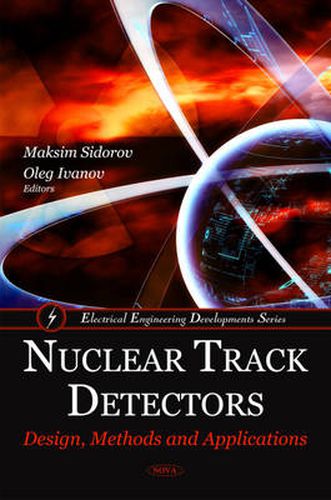Readings Newsletter
Become a Readings Member to make your shopping experience even easier.
Sign in or sign up for free!
You’re not far away from qualifying for FREE standard shipping within Australia
You’ve qualified for FREE standard shipping within Australia
The cart is loading…






Track detectors were discovered by Young, Silk and Barner and they have been widely used in science and technology. The detection technique based on using track detectors is presently called solid state nuclear track detection (SSNTD). This book condenses on the applications of this technique in the various scientific areas. Moreover, although the optical microscope has been the main tool for observations of etched tracks in solid state nuclear track detectors for many years, there has been relatively little investigation about the optical characteristics of these tracks. This book describes the application of the ray tracing method to light propagation through etched tracks. In addition, CR-39 plastic nuclear track detectors (PNTDs) are considered to be the most useful nuclear track detectors for high LET (Linear Energy Transfer) radiation research. This book summarises the methods and applications using CR-39 detectors and presents some updated results. This book also proposes readout architectures for pixel devices used in High-Energy Physics (HEP) where traditional, insufficiently fast structures, such as token-passing techniques, cannot fulfill speed requirements. Other chapters examine the biocompatibility of the polyallyldiglycol carbonate (PADC) films and the biocompatibility enhancement of chemically etched PADC films through superficial pore formation. Polycarbonates like Makrofol or the equivalent, which demonstrate remarkably high absorption ability to noble gases are examined as well.
$9.00 standard shipping within Australia
FREE standard shipping within Australia for orders over $100.00
Express & International shipping calculated at checkout
Track detectors were discovered by Young, Silk and Barner and they have been widely used in science and technology. The detection technique based on using track detectors is presently called solid state nuclear track detection (SSNTD). This book condenses on the applications of this technique in the various scientific areas. Moreover, although the optical microscope has been the main tool for observations of etched tracks in solid state nuclear track detectors for many years, there has been relatively little investigation about the optical characteristics of these tracks. This book describes the application of the ray tracing method to light propagation through etched tracks. In addition, CR-39 plastic nuclear track detectors (PNTDs) are considered to be the most useful nuclear track detectors for high LET (Linear Energy Transfer) radiation research. This book summarises the methods and applications using CR-39 detectors and presents some updated results. This book also proposes readout architectures for pixel devices used in High-Energy Physics (HEP) where traditional, insufficiently fast structures, such as token-passing techniques, cannot fulfill speed requirements. Other chapters examine the biocompatibility of the polyallyldiglycol carbonate (PADC) films and the biocompatibility enhancement of chemically etched PADC films through superficial pore formation. Polycarbonates like Makrofol or the equivalent, which demonstrate remarkably high absorption ability to noble gases are examined as well.